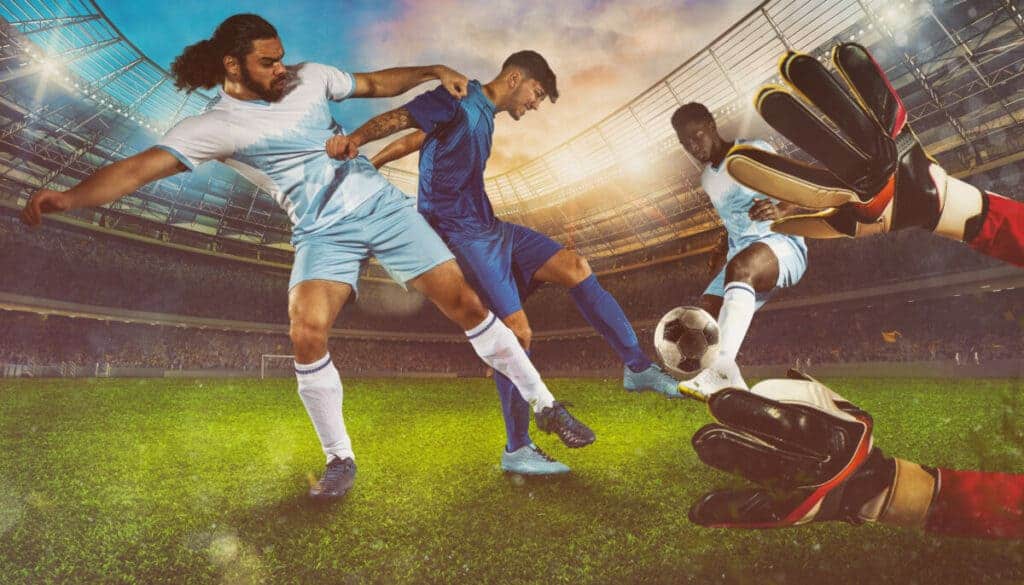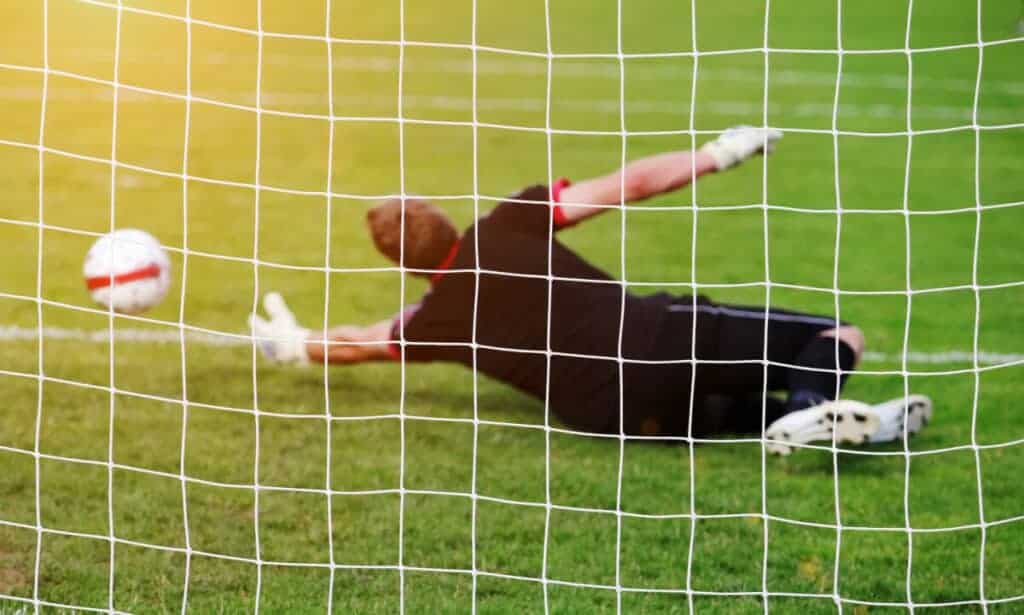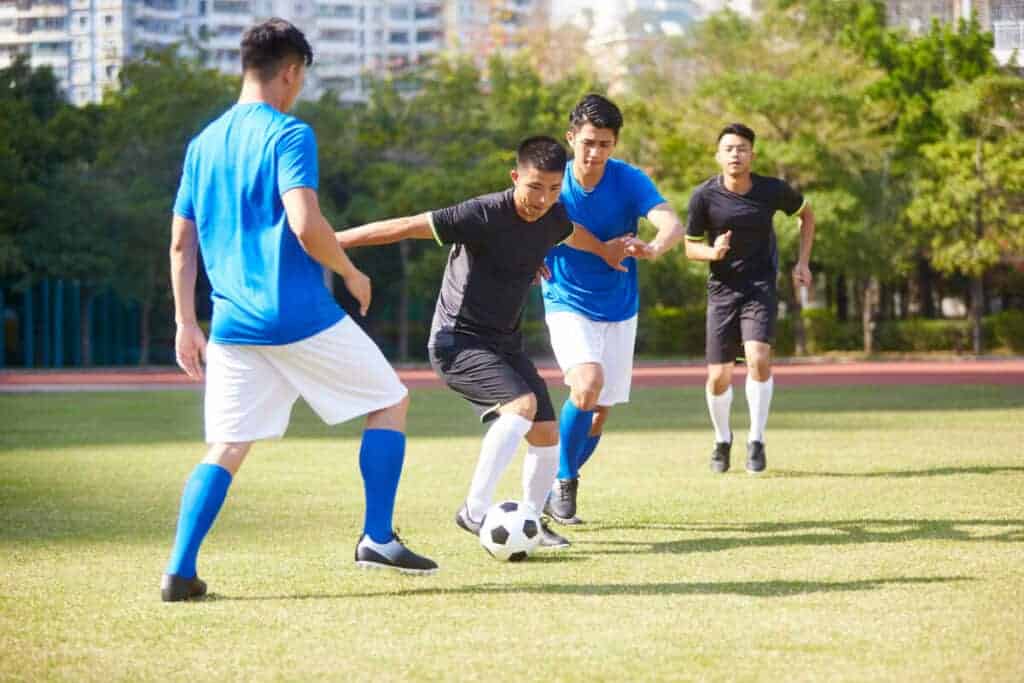Can you use elbows in soccer

If there’s one thing almost everyone knows about soccer, it’s that you can’t use your hands to touch or manipulate the ball in any way. Soccer is a foot sport, hence the European name football. But what about the arms? Can you use your elbows?
Using one’s elbows in soccer to manipulate the ball in any way, to block the ball from striking the face, or to push or strike another player to defend the ball. Players should not have any part of the body from the shoulder to the tips of the fingers come in contact with the ball.
To learn more about the specifics of this soccer rule and why you can’t use your elbows during gameplay, continue reading!
Using elbows in soccer: why it’s prohibited

It’s common knowledge that using your hands in soccer is one of the first rules you learn when you start soccer training. But what many people may forget is that the use of arms is also illegal when it comes in contact with the ball or another player with the deliberate intent to harm or block another person, or to manipulate the ball in any way. This encompasses any part of the arm, from the top of the shoulder to the tips of the fingers, including the elbows.
Using elbows to push another player away from the ball or with the intent to hurt another player can result in the match official removing you from the game or issuing you a yellow or red card. Striking another player with the elbow can be dangerous, as it often creates more force than intended, so it’s best to not use the elbow to defend the ball or do anything that could cause unfair harm to another player. To avoid causing a serious injury or, at the very least, getting penalized in any way deemed necessary, keep your elbows down during the game, tucked into your sides as often as possible.
Hand or arm contact with the ball with the intent of manipulating the ball is called handling, which can be punished in a multitude of ways determined by the match official: the handling could result in a foul, a yellow or red card, awarding the opposing team a penalty kick or free kick, or the player getting removed from the game.
When to use your arms

There are some instances when using the arms is permitted during the game, so long as they don’t intentionally come in contact with the ball or other players. The first thing you can use your arms for is to shield the ball by blocking another player from getting close to the ball. This is primarily done by using the forearm, not the elbow, shoulder, or hand.
Remember, there is a difference between blocking and pushing. If the other player is coming toward you with the intent to steal the ball while you’re dribbling it, you can put your arm out against their chest to keep them from moving forward, but not in a way to push them back. It should be a rule of thumb that you don’t use your hands, elbow, or shoulder to block. You also should not grab or pull the other player toward the ground or in any direction while blocking to get them away from the ball.
If the ball is kicked toward you and hits your arm or hand, this is not considered a handball, as handbells are only considered to be intentional contact between the ball and the player’s hands or arms.
You can also use your arms in non-defensive ways, such as to communicate with other players that you’re ready for the ball to be passed to you, to help you keep your balance during the gameplay, to jump higher (be aware of your surroundings to ensure you won’t hit/hurt anyone with your elbows as you jump), or to run faster.
If you’re a goalie, the rules for using your arms are a bit different. As a goalie, you can use your arms inside your 18-yard box as you’re defending the goal, and your hands and arms can come in contact with the ball when playing this position.
When not to use your arms

It’s a general rule of thumb that you don’t use your arms, from the tops of your shoulders to the tips of your fingers to intentionally touch the ball, unless you are a goalie. This includes your elbows. You also should not use your arms to pull, push, or hit another player in an offensive or defensive manner.
As mentioned earlier, you can only use the forearm to block another player or use an extended and bent arm to create distance between another player and the ball while you’re handling the ball with your feet. Using any excessive force to push another player in one direction or another is considered a foul. Don’t stick your arm out straight to push an opponent or another player away from you or the ball. This is also considered a foul.
You also cannot use your arms or hands to grab or pull another player. This includes grabbing their clothes to pull at them and manipulate their direction, as well as using the whole arm to pull a player down by the legs, head, or torso. This is another action in the game that is considered a foul, judged, and penalized by the referee or match official.
If a ball is coming towards you, you should not use your hands or arms to protect your face, as this can be penalized by the referee. Instead, you can dodge the ball another way by ducking or moving away. Lastly, you should never use your elbows with the intent of hurting another player or as a means to prevent them from getting near the ball. This could lead to the player being issued a red card or being removed from the game.
When professional players use their elbows illegally
There are many professional soccer players who have used their elbows illegally during a big game and received a lot of scrutiny for it. For example, in a World Cup game four years ago between Iran and Portugal, a player on the Iranian team struck his elbow into the face of an opposing player. The manager of the Iranian team gave the player a yellow card, which sparked an argument between both team managers as to whether or not that foul would warrant a red card after they had reviewed footage of the action.
Because soccer rules clearly state that this is a red card-worthy offense, it was ruled out that Iran’s manager made a serious misjudgment that is worthy of disqualification. This in combination with another Iranian player lashing a ball at the side-netting in a previous game led Iran to be eliminated from the World Cup. This just goes to show how using an elbow to hit another player, whether as defense or offense, can lead a team to serious consequences.
